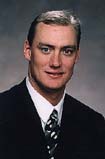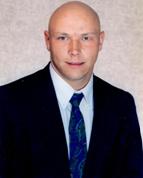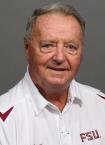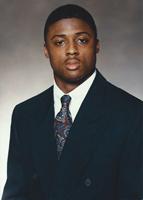Once Again The Cool School
By Charlie Barnes
Fifteen years isn't such a long time, especially for those of us who are no longer burdened by the fear of dying young. Time carries the illusion of a longer arc to those on the early side of life.
Recall the summer of 2000 when we stood in the afterglow of a national championship won in a manner never before seen in college football.
That summer, we looked toward September with knowing smiles. Our 28-year-old quarterback, Chris Weinke, was returning to lead the team and would go on to win the 2000 Heisman Trophy. But two-time consensus All-American kicker Sebastian Janikowski was gone, and none too soon in the minds of Florida State opponents.
During the 1999 championship season, one opposing ACC Coach had complained, "(FSU's) kicker is bigger than any of my lineman, and their quarterback is bigger than anybody on my team!"
We were spoiled, of course, and we knew it. But nobody wanted to take the cure.
The cure came soon enough in the form of what some unfairly call the "Lost Decade." It's hard to make a case for defining those years as being lost. True, they did not rise to dynasty status, but every one of the nine campaigns from 2001 through 2009 - Jimbo took over in 2010 - were winning seasons followed by bowl invitations. Nine winning seasons, a winning bowl record and three ACC championships.
No, the final seasons in that stretch did not afford complete satisfaction. But even in the worst of those years - 2006, with its 7-6 mark and the only losing ACC record in our history - we still beat Miami to start the year and pounded UCLA in the bowl game.
The Seminoles have been to a record 33 consecutive bowl games now. Alumni who were born in the last year FSU did not go to a bowl (1981) are now season ticket holders and bringing their children to the games.
But that long ago optimistic summer of 2000 seemed to promise nothing but the continued domination of our rivals. FSU was the "Cool School," and that designation was official.
Florida State occupied the peak of the pyramid. We had played in two consecutive national championship games and would play for a third after the upcoming 2000 season. Florida State was the most televised and the most popular program in the country.
In February 2000, we were given a new title. The cover of ESPN The Magazine christened FSU "The Cool School." Rich, lavish features proclaimed the Seminoles as college football's reigning glamour program.
ESPN's Gene Wojciechowski described the relentless flood of bright lights that recorded and broadcast every aspect of FSU's program. "The 'Noles are college football's Truman Show: at least forty-four print, TV and radio outlets cover them with regularity. 'Like I told our kids before the season: If you've got talent, they'll see it,' says Bowden. 'If you don't make All-America, that's your fault. Don't complain.'"
The Cool School issue made the point that while almost every elite program has suffered occasional dips in the past 20 years, FSU had only grown stronger.
And it's not just stars that come to FSU, said ESPN The Magazine; it's also the stars who want to come. The magazine noted that Travis Minor deliberately wore Warrick Dunn's No. 28 jersey in high school in Louisiana, and that Tennessee QB Tee Martin used to add the letters "FSU" to his autographs back home as a high school star in Alabama, and that Penn State linebacker LaVar Arrington wore Seminole apparel to his high school workouts in Pittsburgh.
"Coolness has its perks," the magazine said, "and no program is cooler than Florida State's."
And that's how it was 15 years ago.
And how doubly satisfying it is now to know that the Seminoles are within range of Cool School status once again. The 'Noles are 27-1 over two seasons; no one can match that. In the Jimbo Fisher era, his teams are 13-2 against our three biggest rivals, losing only once to Clemson and once to Florida. His Groza Award winning and 2014 consensus All-American kicker may not rival Janikowski as the life of the party but Roberto Aguayo is more than up to the job. And his incoming transfer quarterback is a fifth year senior. Everett Golson may not win the starting job this fall, but this summer his name is already being mentioned as a Heisman candidate, "Coolness has its perks …"
The speed at which things change relates to the observer's outlook. How recently were we nursing the bruises inflicted by a long string of losses to Florida?
It's not sporting to hoot at our closest rivals when they're down. But there's nothing wrong with taking quiet pleasure at their unhappiness. Let's enjoy it while we can. The good folks in Gainesville and Miami will be back in top form soon enough (too soon from our perspective; too long from theirs). Those programs are too well established and the talent pool is too rich.
One certain measure of the Seminoles' growing prosperity is the increased animosity of rival fans. Spectacular success on the field and in recruiting has led to an explosion of angry attacks on social media. Every day there are more snarky, anonymous zings in the local newspaper and online and statewide as well.
Get used to it. It was no less so during the Dynasty. Tell your friends wearing those other colors that it's all right. We remember what it's like to feel their pain.
Something else has changed in the last 15 years. It is a subtle but significant issue. During the Dynasty years, rivals across the South criticized and demeaned our fans for not participating in numbers comparable to those of older, more established programs. It was a constant theme. The critique was unfair, but during that era of Seminole dominance, what else really did they have to say?
Tallahassee is a relatively isolated, hard-to-get-to place, and we have a big-time stadium. Noon games vs. directional opponents did not always draw a full house of 80,000-plus.
The anti-FSU noise reached a peak during the national championship game in the Fiesta Bowl after the 1998 season. Orange-clad Tennessee fans covered Phoenix like flood waters. We Seminoles were late arrivals and far fewer in numbers, as Vols fans were only too delighted to point out.
Thousands of Seminole fans who wanted to go simply couldn't get there. Getting tickets wasn't a problem; getting there with virtually no commercial flights with empty seats to sell was the problem. Tennessee fans had started filling them up ever since the Vols achieved the No. 1 ranking in mid-season. If there were to be chartered flights, they had to be arranged quickly, and speed is not something one readily associates with the charter business.
When we found out at the last possible minute that we were going to the desert and not the Sugar Bowl or the Orange Bowl, there was a window of perhaps 48 hours for our fans to make their decision about going.<
Ticket sales were opened up to all 17,000 Seminole Boosters immediately. At that point, any Booster was allowed to purchase up to eight tickets. Athletic director Dave Hart wanted as many Seminoles as possible to be able to go. Phone company records confirmed that more than 300,000 phone calls were made to the ticket office over two days. All the tickets were sold out quickly.
But the time was too short and the distance too great for Florida State fans to flood the desert like the Vols. And so we endured the cackling of the critics again.
If you don't remember what it was like in those days, then you probably don't realize how much of the criticism has now evaporated. There is a telling silence these days in Gainesville and Miami and elsewhere surrounding the issue of empty seats.
Number of tickets sold is not the same measure as the number of seats occupied. The paradigm has shifted, and it's not because college football has fallen in popularity. No, in fact it is more popular now than ever before. But for the first time, average attendance nationally was slightly down.
There are probably two reasons for the modest decline. First, so many small schools are either restarting lapsed football programs or creating new ones. These stadiums are more numerous, but the small crowds bring down the overall average.
The second reason is the most obvious: The comforts of home tempt many fans to stay at the house.
And that is precisely why Florida State fans have emerged as the best in the country. For generations, our Seminole fans have accepted the extra trouble and additional expense to come to Tallahassee for games.
Our fans have proven their loyalty in ways that fans of rival schools have never really been pushed to do.
There are scattered empty seats all over the South these days where there used to be none. It's not the fans aren't as passionate or as devoted to their teams. It's that the magic of electronics and the ubiquity of the Internet have made even day-trips seem, well, inconvenient.
With the exception of Doak Campbell Stadium, the major fan destinations in the south have always been within relatively easy reach. For instance, let's pretend that you are a fan of an SEC school, say Georgia. You live in Atlanta, and on Saturday morning you roll out for breakfast, after which you decide to mow your grass. There's plenty of time.
Late in the morning you pack up the family and drive the 75 miles to Athens. It may take an hour and a half - two hours if traffic is bad - and you find your parking place in time to enjoy a refreshing beverage or two with friends before strolling to Sanford Stadium for the game.
After the game, you head back toward Atlanta. You might have brought some sandwiches or other refreshments to enjoy on the return trip. Even if you stop for dinner you'll be home and in bed in time to watch the highlights on Sports Center.
But let's say that instead of a Georgia fan, you're a loyal Auburn Tiger. It's a little over 100 miles from Atlanta straight south on I-185. Two hours driving time on game day, maybe more if you live on the north end of the city.
Are you a fan of the Crimson Tide? That's a little farther from Atlanta. Tuscaloosa is about three hours away - the same distance as Ocala from Tallahassee. Fortunately for the Alabama program, Birmingham, a city of over 200,000 where vast numbers of season ticket holders live, is only one hour away.
Tennessee? The Volunteer stadium is roughly equidistant from Chattanooga and Nashville, metropolitan areas with a combined population of almost two million. And in either case you can probably get from your home to Neyland Stadium and back on less than one tank of gas.
Jerry Kutz made the point clear, "For Seminole fans, every game is a road game." It has always been so. Since 1947, our fans have committed themselves to showing up, regardless of the distance and expense. And there are a great many more of us now than there were 68 years ago.
These are great days to be a Seminole.
A casual stroll across the grounds in spring or summer validates that ours is the South's most glamorous campus. And it is without question that FSU excels at playing the South's most celebrated game. If there is any institution with a legitimate claim of being the "Cool School" in 2015 it is Florida State University.
Yes indeed, the Cool School. Once again.
 |
 |
 |
 |
 |
 |
 |
 |